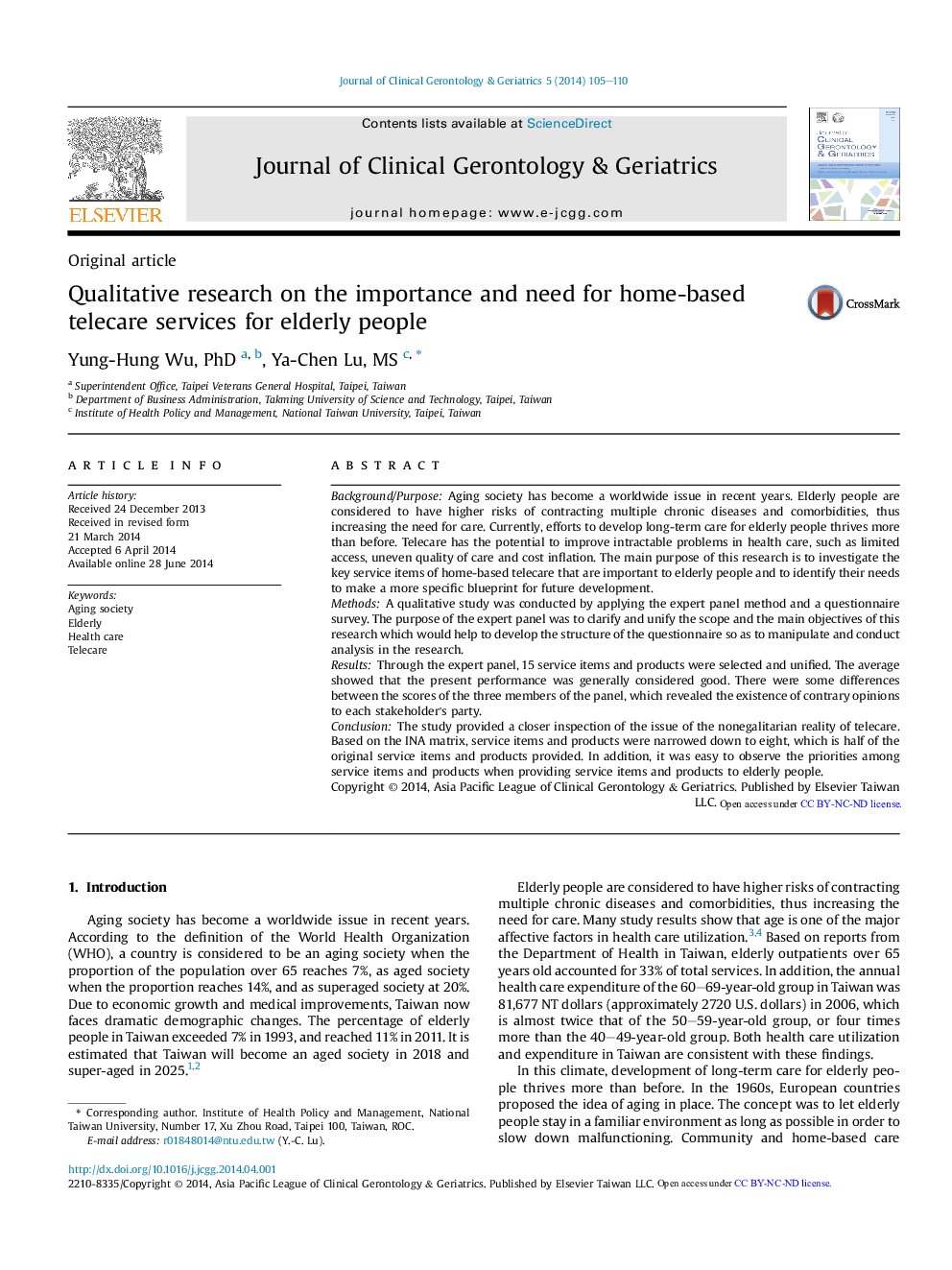| Article ID | Journal | Published Year | Pages | File Type |
|---|---|---|---|---|
| 3325810 | Journal of Clinical Gerontology and Geriatrics | 2014 | 6 Pages |
Background/PurposeAging society has become a worldwide issue in recent years. Elderly people are considered to have higher risks of contracting multiple chronic diseases and comorbidities, thus increasing the need for care. Currently, efforts to develop long-term care for elderly people thrives more than before. Telecare has the potential to improve intractable problems in health care, such as limited access, uneven quality of care and cost inflation. The main purpose of this research is to investigate the key service items of home-based telecare that are important to elderly people and to identify their needs to make a more specific blueprint for future development.MethodsA qualitative study was conducted by applying the expert panel method and a questionnaire survey. The purpose of the expert panel was to clarify and unify the scope and the main objectives of this research which would help to develop the structure of the questionnaire so as to manipulate and conduct analysis in the research.ResultsThrough the expert panel, 15 service items and products were selected and unified. The average showed that the present performance was generally considered good. There were some differences between the scores of the three members of the panel, which revealed the existence of contrary opinions to each stakeholder's party.ConclusionThe study provided a closer inspection of the issue of the nonegalitarian reality of telecare. Based on the INA matrix, service items and products were narrowed down to eight, which is half of the original service items and products provided. In addition, it was easy to observe the priorities among service items and products when providing service items and products to elderly people.
